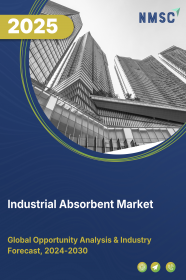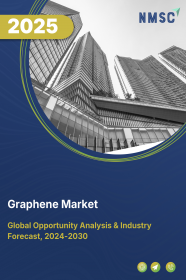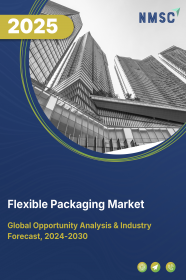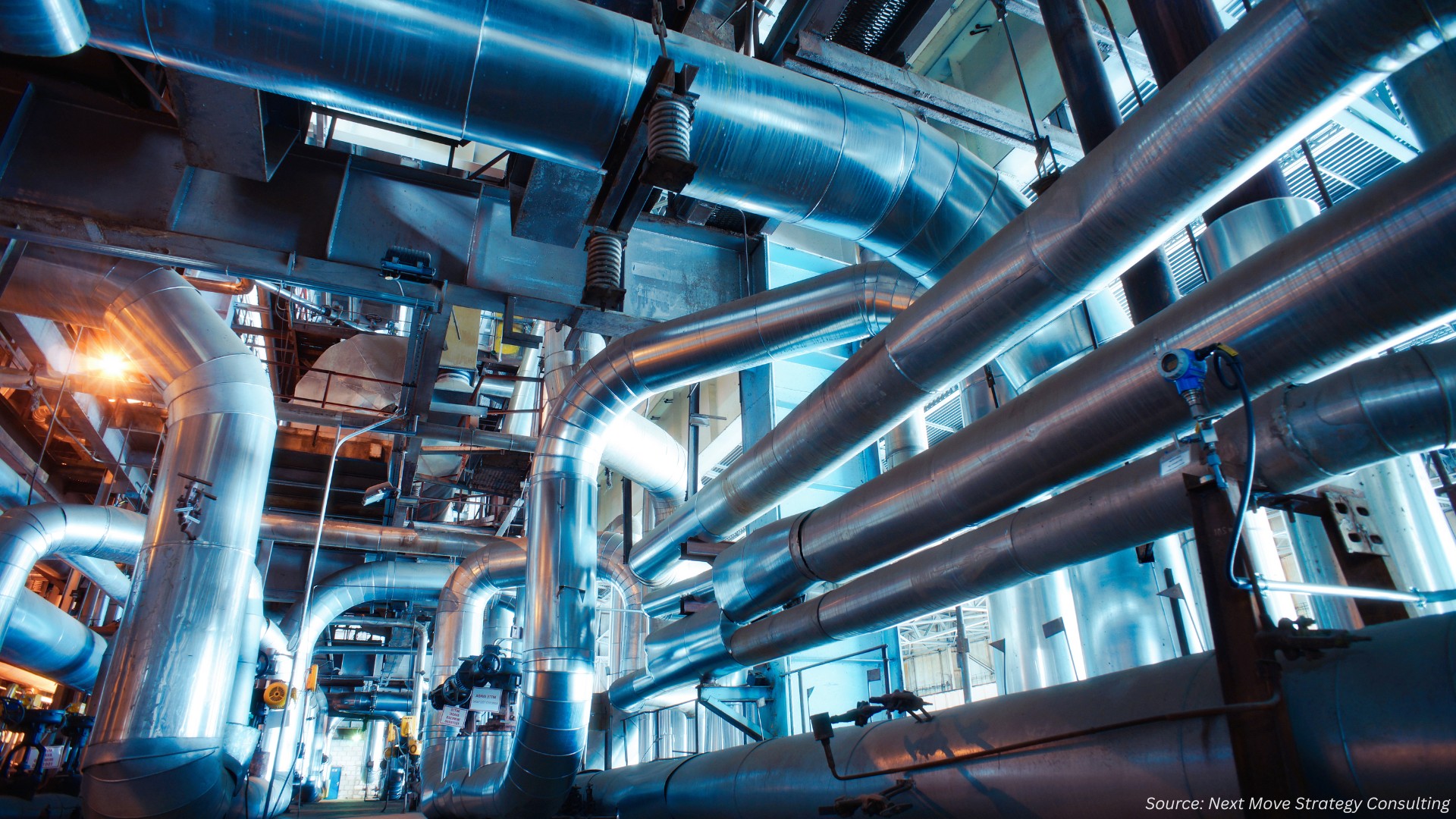
Industrial Absorbent Market by Type (Universal, Hazmat, Oil Only, and Others), by Material (Natural Organic, Natural Inorganic and Synthetic), by Products (Pads, Pillows, Rolls, Sheets & Mats, and Others), and by End Users (Oil & Gas, Chemical, Food Processing, Healthcare, Aerospace, Automotive, and Others)–Global Opportunity Analysis and Industry Forecast 2025-2030
Industry Outlook
The global Industrial Absorbent Market size was valued at USD 4.81 billion in 2024 and is predicted to reach USD 5.01 billion by the end of 2025. The industry is predicted to reach USD 6.11 billion by 2030 with a CAGR of 5.0% from 2025-2030. The industry is experiencing substantial growth driven by several key factors.
Rising environmental awareness is prompting industries to shift towards biodegradable and eco-friendly absorbents, with innovations in plant-based and hemp-derived solutions offering a sustainable alternative to petroleum-based products. Stringent regulatory standards are also fueling demand as industries face increasing pressure to comply with environmental guidelines, particularly in sectors like oil and gas, chemicals, and manufacturing.
Additionally, technological advancements in absorbent materials are enhancing absorption capacity, speed, and durability, providing more efficient solutions for managing spills and hazardous waste. However, the higher cost of eco-friendly absorbents remains a challenge, especially for small and medium-sized enterprises. Nonetheless, the growing demand for green products presents significant opportunities for market players to capitalize on by developing renewable material-based absorbents, positioning themselves as leaders in sustainability while benefiting from government incentives.
Rising Environmental Awareness Drives the Industrial Absorbent Market Growth
Environmental sustainability is now a key focus for industries globally. As businesses face increasing pressure from both consumers and regulators to reduce their ecological footprint, the demand for biodegradable and eco-friendly industrial absorbents is rapidly growing. These absorbents are derived from renewable resources, offering a viable alternative to traditional petroleum-based products. The market is also seeing innovations like plant-based and hemp-derived absorbents, which promise higher absorption rates with less environmental impact. This trend aligns with the broader global shift towards circular economies and waste reduction.
Stringent Regulatory Standards Fuels the Market Trends
Environmental regulations are becoming more stringent, particularly in industries like oil and gas, chemicals, and manufacturing. Governments are imposing heavy fines on companies that fail to properly manage chemical spills or hazardous waste. In response, industries are turning to high-quality absorbents that can effectively manage spills and prevent environmental contamination. These products help businesses meet compliance standards, protect workers, and minimize the risk of severe financial penalties. For example, the oil and gas sector requires industrial absorbents that can withstand extreme conditions while absorbing large volumes of hazardous liquids.
Technological Advancements in Absorbent Materials Drive the Market Growth
The ongoing advancements in absorbent materials are significantly contributing to the industrial absorbent industrial absorbent market expansion. Innovations that enhance absorption capacity, speed, and durability are enabling companies to provide more efficient solutions for various industries. These technological improvements increase the versatility and effectiveness of absorbents, making them suitable for a broader range of applications, particularly in managing hazardous spills and waste. As industries strive for operational efficiency and compliance with stringent regulations, the adoption of these next-generation materials offers businesses an opportunity to differentiate themselves and capitalize on industry growth.
High Initial Costs of Eco-friendly Absorbents Hinder the Market Expansion
The rising demand for sustainable absorbents presents a significant challenge due to their higher cost compared to traditional alternatives. The use of premium raw materials in eco-friendly options drives up production costs, making large-scale implementation more difficult for businesses.
While large corporations with sustainability goals can manage these expenses, small and medium-sized enterprises may find it challenging to justify the investment. The industry must focus on balancing environmental responsibility with cost efficiency, working to make sustainable solutions more affordable to facilitate wider adoption across various market segments.
Emerging Demand for Green Products Presents Opportunities for the Industry Growth
The increasing pressure from both consumers and regulators for sustainable solutions is driving significant growth in the sector for eco-friendly absorbent products. Industry players can seize this opportunity by developing products made from renewable materials, such as plant fibers, hemp, and other bio-based substances. As eco-conscious consumers demand more environmentally friendly alternatives, businesses that lead in sustainability can strengthen their competitive position.
Moreover, companies investing in green technologies benefit from government incentives and tax breaks that support environmentally responsible business practices, offering additional growth potential in the evolving industrial absorbent market. For instance, in October 2024, BASF invested USD 19.2 million to upgrade its Superabsorbent Polymer (SAP) production facility in Freeport, Texas. This upgrade boosted production capacity by 20% and enhanced the polymer's ability to absorb and swell faster. The improved SAPs support the creation of thinner and more dependable hygiene products, meeting the increasing demand for sustainable and efficient absorbent solutions.
Market Segmentation and Scope of the Study
The industrial absorbent market report is segmented based on type, materials, products, end users, and region. By type, the market is divided into universal, hazmat, oil only, and others. On the basis of materials, the market is segmented into natural organic, natural inorganic, and synthetic materials. On the basis of natural organic, the market is further divided into cellulose and corncob. On the basis of synthetic, the market is further divided into polypropylene and polyester. By products, the market is categorized into pads, rolls, pillows, granules, booms & socks, sheets & mats, and others. Regarding end users, the market is segmented into oil & gas, chemical, food processing, healthcare, aerospace, automotive, and others. On the basis of oil & gas, the market is further divided into upstream, midstream and downstream. Regional analysis includes North America, Europe, Asia-Pacific, and Rest of the World (RoW).
Geographical Analysis
North America dominates the global industrial absorbent market share, primarily driven by the region's robust regulatory framework and growing environmental awareness. The United States and Canada are increasingly prioritizing eco-friendly solutions, especially in industries such as oil and gas, chemicals, and manufacturing. Stringent environmental regulations and government incentives for sustainable practices are prompting businesses to adopt high-performance, biodegradable absorbents.
Additionally, the region's market is benefiting from the rapid advancement of absorbent technologies, including the use of plant-based and bio-degradable materials. The increasing demand for green products in sectors like spill management and hygiene further fuels market growth, positioning North America as a leader in the sector.
Europe is another key region experiencing significant growth in the industrial absorbent market demand, thanks to its focus on sustainability and stringent environmental policies. The European Union's aggressive stance on environmental protection has made compliance with waste management and spill control regulations a priority for industries across the region. The push for circular economy principles is driving demand for eco-friendly absorbents, which is aligning well with the rising adoption of renewable materials.
The industry in Europe is also benefiting from innovations in absorbent technologies, such as enhanced polymer-based absorbents that offer superior performance in extreme conditions. As European businesses look to align with both consumer demand and regulatory standards, the region’s market share is expected to continue growing.
The Asia-Pacific region, driven by rapid industrialization and a booming manufacturing sector, presents substantial growth potential for the industrial absorbent market. Countries like China, India, and Japan are witnessing significant developments in their industrial infrastructure, which is fueling the need for absorbents in sectors such as oil and gas, chemicals, and automotive. While the region faces challenges related to the adoption of eco-friendly products due to cost concerns, there is an increasing shift toward sustainable solutions as environmental regulations tighten.
Moreover, the growing awareness of environmental issues and the rising demand for spill control products are prompting regional businesses to invest in advanced absorbent technologies. As the Asia-Pacific region continues to expand its industrial base, the demand for absorbents is expected to increase, making the region a key player in the global sector.
The Rest of the World (RoW) encompasses regions such as Latin America, the Middle East, and Africa, where the market is still developing but holds substantial potential. In these regions, industries are increasingly recognizing the importance of effective spill management and environmental protection. The Middle East, for example, has a strong demand for absorbents in the oil and gas sector due to its extensive energy production and export activities.
Similarly, countries in Latin America are beginning to adopt more sustainable practices in manufacturing and chemical processing. While cost remains a major challenge in these regions, the rising awareness of environmental issues and regulatory pressures are expected to drive market growth. As these emerging markets mature and industrialization accelerates, the demand for eco-friendly absorbents will likely rise, creating new opportunities for global industry players.
Strategic Approaches by Key Players in the Market
Key players in the global industrial absorbent industry are adopting various strategies to stay competitive amid growing environmental concerns and stringent regulations. Many companies are focusing on expanding their product portfolios by incorporating eco-friendly and biodegradable materials, such as plant-based and hemp-derived absorbents, to meet the rising demand for sustainable solutions.
For example, in October 2024, BASF made a significant investment in upgrading its Superabsorbent Polymer (SAP) production facility in Freeport, Texas, which enhanced production capacity and improved product performance, aligning with the growing market demand for more efficient absorbents.
However, despite these advancements, companies face significant challenges, including the high cost of producing eco-friendly absorbents compared to traditional alternatives, which can be a barrier for smaller businesses. Additionally, while the demand for green solutions is on the rise, the industrial absorbent market is still grappling with the challenge of ensuring widespread adoption across various industries, especially in emerging industries where cost constraints are prevalent.
Looking ahead, there are significant opportunities for innovation in absorbent materials and technologies that offer both higher absorption efficiency and lower environmental impact. Companies that focus on improving the affordability of sustainable solutions, along with those investing in advanced manufacturing processes, are well-positioned to tap into the growing demand for eco-friendly products, creating new avenues for growth and enhancing their presence in the industry.
Key Benefits
-
The report provides quantitative analysis and estimations of the industry from 2025 to 2030, which assists in identifying the prevailing market opportunities.
-
The study comprises a deep dive analysis of the current and future industrial absorbent market trends to depict prevalent investment pockets in the sector.
-
Information related to key drivers, restraints, and opportunities and their impact on the market is provided in the report.
-
Competitive analysis of the players, along with their market share is provided in the report.
-
SWOT analysis and Porters Five Forces model is elaborated in the study.
-
Value chain analysis in the market study provides a clear picture of roles of stakeholders.
Industrial Absorbent Market Key Segments
By Type
-
Universal
-
Hazmat
-
Oil Only
-
Others
By Material
-
Natural Organic
-
Cellulose
-
Corncob
-
-
Natural Inorganic
-
Synthetic
-
Polypropylene
-
Polyester
-
By Product Type
-
Pads
-
Rolls
-
Pillows
-
Granules
-
Booms & Socks
-
Sheets & Mats
-
Others
By End Users
-
Oil & Gas
-
Upstream
-
Midstream
-
Downstream
-
Chemical
-
Food Processing
-
Healthcare
-
Aerospace
-
Automotive
-
Others
By Region
-
North America
-
The U.S.
-
Canada
-
Mexico
-
-
Europe
-
The UK
-
Germany
-
France
-
Italy
-
Spain
-
Denmark
-
Netherlands
-
Finland
-
Sweden
-
Norway
-
Russia
-
Rest of Europe
-
-
Asia Pacific
-
China
-
Japan
-
India
-
South Korea
-
Australia
-
Indonesia
-
Singapore
-
Taiwan
-
Thailand
-
Rest of Asia Pacific
-
-
RoW
-
Latin America
-
Middle East
-
Africa
-
Key Players
-
3M Company
-
Cellcomb Technologies
-
Meltblown Technologies Inc
-
Fentex Limited
-
Tolsa SA
-
Enviroguard Solutions LLP
-
Axiva Sichem Pvt. Ltd.
-
Supremex Equipments
-
GWS Surgical LLP
-
UDYOGI PLASTICS PRIVATE LIMITED.
-
Johnson Matthey Plc
-
New Pig Corporation.
-
EP Minerals
SCOPE AND SEGMENTATION:
|
Parameters |
Details |
|
Market Size in 2024 |
USD 4.81 Billion |
|
Revenue Forecast in 2030 |
USD 6.11 Billion |
|
Growth Rate |
CAGR of 5.0% from 2025 to 2030 |
|
Analysis Period |
2024–2030 |
|
Base Year Considered |
2024 |
|
Forecast Period |
2025–2030 |
|
Market Size Estimation |
Billion (USD) |
|
Growth Factors |
|
|
Countries Covered |
28 |
|
Companies Profiled |
15 |
|
Market Share |
Available for 10 companies |
|
Customization Scope |
Free customization (equivalent up to 80 working hours of analysts) after purchase. Addition or alteration to country, regional, and segment scope. |
|
Pricing and Purchase Options |
Avail customized purchase options to meet your exact research needs. |


















 Speak to Our Analyst
Speak to Our Analyst

























